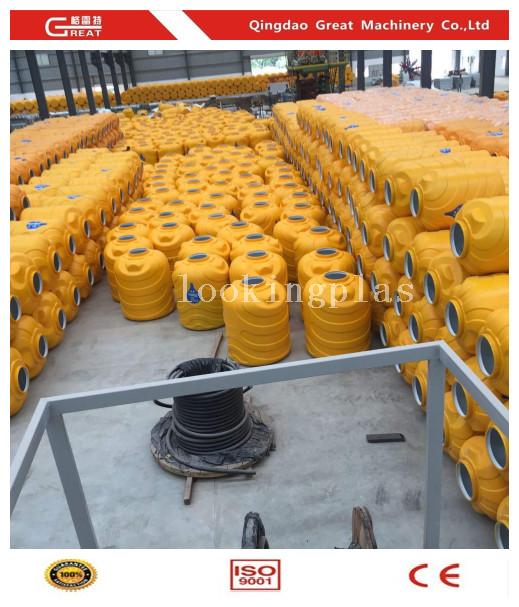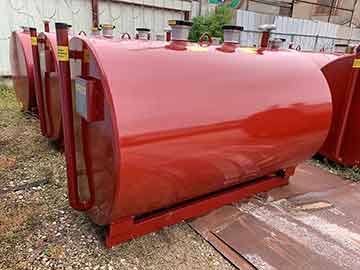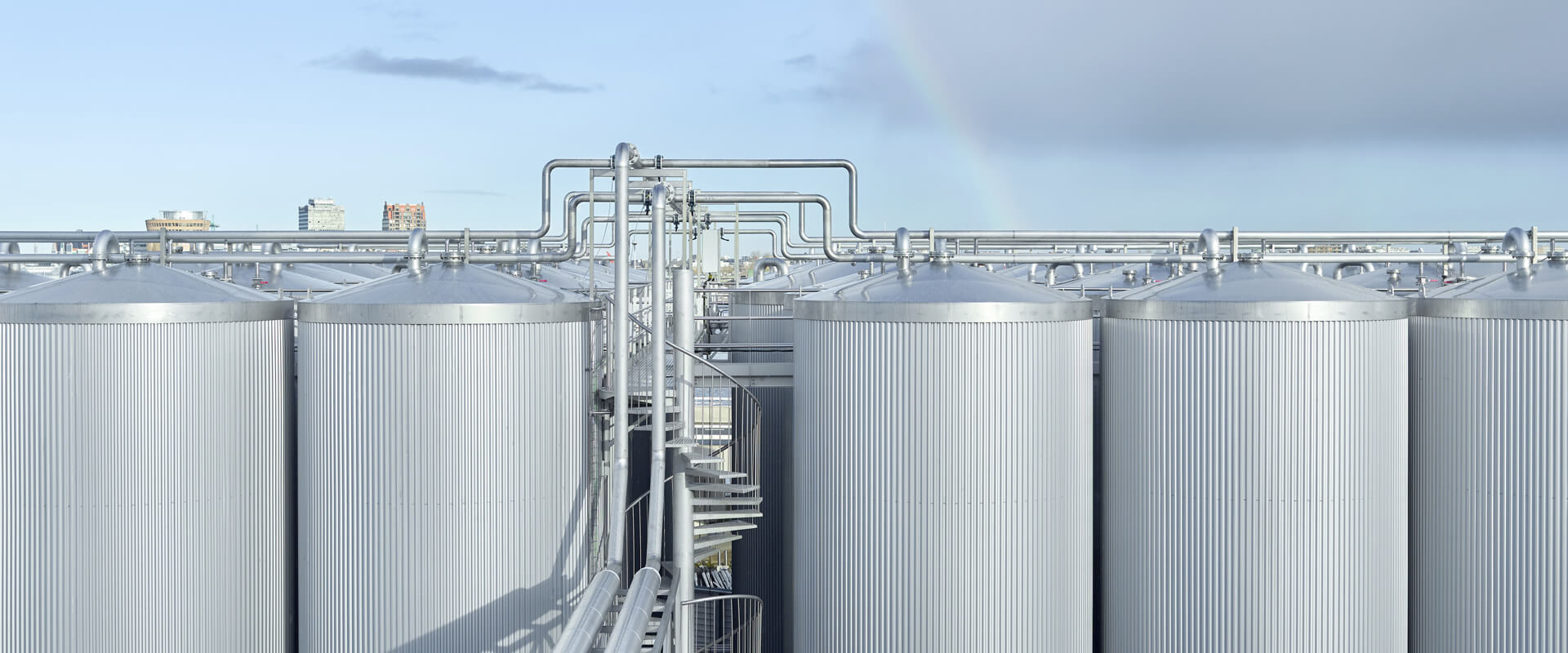The future of Storage Tank Manufacturing and sustainability
Wiki Article
The Future of Storage Tank Manufacturing: Patterns and Technologies to Watch
The storage tank manufacturing sector gets on the cusp of a critical advancement, driven by arising trends in clever materials, automation, and sustainability. As sectors increasingly focus on ecological obligation, innovations such as eco-friendly compounds and IoT-driven tracking systems are reshaping operational paradigms. On top of that, the expanding demand for personalization and modular layouts suggests a change in the direction of more versatile manufacturing methods. Understanding these fads not only highlights the obstacles ahead however additionally exposes possibilities that might redefine the landscape of storage tank production in the coming years. What ramifications might these developments hold for sector stakeholders?Developments in Smart Products
In recent years, the storage tank manufacturing field has actually seen a significant uptick in the fostering of smart products, transforming layout and performance. Smart products, which can react dynamically to environmental adjustments, have actually enabled manufacturers to create tanks that are not only much more long lasting however likewise more reliable in their functional abilities.One notable improvement is the assimilation of form memory alloys and polymers that can adjust to varying stress and temperature levels. This flexibility boosts the architectural stability of tanks, lowering the danger of failings and leakages (Texas Oil & Gas Storage Tank Fabrication Authority). Additionally, these materials often display self-healing buildings, which even more prolongs the life expectancy of storage space tanks, lessening maintenance prices and enhancing security
The unification of sensing units within smart materials enables for real-time surveillance of storage tank conditions, giving essential data that helps in predictive upkeep and threat administration. This data-driven method not only boosts functional efficiency however additionally aligns with environmental sustainability goals by optimizing resource usage and stopping spills.
Surge of Automation Technologies
The increase of automation innovations is transforming storage tank production by incorporating robotics into production processes, boosting efficiency and precision. Furthermore, the release of smart sensors allows real-time monitoring, guaranteeing top quality control and safety and security standards are fulfilled. AI-driven procedure optimization even more simplifies operations, decreasing prices and enhancing total performance in the sector.Robotics Assimilation in Manufacturing
Robotics combination is revolutionizing the manufacturing landscape, particularly in the storage tank industry. As manufacturers endeavor for enhanced effectiveness and precision, robotics technologies are becoming necessary devices for enhancing production procedures. Automated systems can executing repeated jobs with greater rate and precision than human labor, reducing the likelihood of mistakes and improving general item high quality.One of the vital benefits of robot combination is the ability to optimize operations. Automated robot arms can manage heavy products, weld elements, and conduct evaluations, which reduces physical strain on workers and decreases downtime. This change not just improves security but additionally enables human staff members to concentrate on even more facility and value-added tasks.
Robotics can assist in adaptable manufacturing, making it possible for firms to adjust promptly to altering market needs. Advanced programs permits robotics to quickly switch in between various tasks and items, which is specifically helpful in an industry where modification is progressively wanted
As robotics technology continues to progress, manufacturers can anticipate improved capacities, including boosted machine learning formulas and enhanced truth applications, additionally driving efficiency in storage tank production and establishing new requirements for the industry.
Smart Sensors Implementation

The data collected from these sensors can be leveraged to enhance the supply chain, ensuring that materials are available when required while reducing waste. This level of insight enables manufacturers to react quickly to changing conditions and customer demands, boosting total productivity.
Additionally, wise sensors add to boosted regulative conformity by continuously keeping track of ecological variables and guaranteeing adherence to safety and security criteria. As the sector proceeds in the direction of more sustainable practices, the ability to monitor emissions and source consumption in real-time is very useful.
AI-Driven Process Optimization
Manufacturers in the storage tank industry are significantly harnessing the power of AI-driven procedure optimization to enhance operational effectiveness and decision-making abilities. By integrating sophisticated formulas and equipment learning techniques, companies can assess large amounts of data produced throughout the manufacturing process. This data-driven approach makes it possible for real-time monitoring of manufacturing metrics, bring about more prompt treatments and educated decisions.AI modern technologies facilitate anticipating upkeep, allowing manufacturers to anticipate devices failures prior to they occur, thereby decreasing downtime and maintenance expenses. In addition, these systems can enhance source allocation by analyzing production patterns and changing workflows, making sure that products and labor are made use of efficiently.
Additionally, AI-driven optimization improves top quality control by identifying possible issues during the manufacturing procedure. Automated assessments powered by AI can rapidly spot variances, guaranteeing that just products fulfilling strict high quality requirements advance with the production line.
As the storage tank sector remains to welcome automation, AI-driven procedure optimization attracts attention as a transformative pressure, driving advancement and competitiveness. By leveraging these innovations, manufacturers can not only improve operations yet additionally adapt promptly to market needs, placing themselves for sustainable growth in an increasingly intricate manufacturing landscape.
Emphasis on Sustainability Practices
As the storage tank manufacturing industry evolves, a substantial emphasis is put on sustainability practices. This consists of the adoption of eco-friendly products, the application of energy-efficient production processes, and the integration of round economy concepts. By prioritizing these efforts, manufacturers not just reduce their ecological influence but also enhance the long life and effectiveness of their items.Eco-friendly Products Fostering
Progressively, the storage tank production sector is welcoming green products as a basic facet of sustainability methods. This change is driven by enhanced ecological understanding and regulatory stress, triggering manufacturers to look for alternatives that lessen ecological effect.Naturally degradable compounds and recycled metals are acquiring traction, offering both performance and reduced carbon footprints. For example, making use of high-recycled-content steel not just reduces the need for virgin products however also enhances the total sustainability of the item lifecycle. Furthermore, manufacturers are checking out bio-based resins that offer sturdiness while being less harmful to the atmosphere.
In addition, the fostering of environment-friendly coverings and coatings, which are free from volatile organic substances (VOCs), shows the sector's commitment to lowering air contamination and advertising much healthier working conditions. These developments not only straighten with international sustainability goals however additionally fulfill the growing market demand for greener products.
The combination of environmentally friendly materials in storage tank production is not simply a pattern; it represents a proactive strategy in the direction of accountable manufacturing that prioritizes both ecological stewardship and economic viability, setting a brand-new standard for future advancements in the sector.
Energy-efficient Manufacturing Processes
There is a growing acknowledgment within the storage tank manufacturing market of the value of energy-efficient processes as an essential element of lasting practices. As the market faces boosting stress to lower its carbon footprint, manufacturers are implementing ingenious modern technologies and techniques focused on lessening power intake throughout the production cycle.One considerable fad is the fostering of innovative manufacturing methods such as lean production and automation. These strategies improve operations, decrease waste, and boost performance, while also lowering energy use. Furthermore, the combination of renewable resource resources, such as solar and wind power, right into manufacturing centers is coming to be much more widespread, permitting business to run sustainably and lower reliance on fossil gas.
In addition, energy-efficient machinery and tools are being prioritized in new financial investments, as manufacturers look for to optimize their power usage. Using energy management systems enables real-time monitoring and analysis, promoting continual renovation in energy performance.
Round Economic Climate Combination
A remarkable shift in the direction of circular economy integration is changing sustainability methods within the storage tank manufacturing industry. This technique stresses the value of source effectiveness, waste reduction, and the recycling of products throughout the production lifecycle. By adopting circular concepts, manufacturers are increasingly focused on making storage tanks that focus on repairability, recyclability, and durability.As component of this modification, firms are checking out ingenious products and production techniques that lessen environmental influence. The incorporation of recycled metals and plastics not only reduces the demand for virgin sources but additionally lowers carbon exhausts connected with extraction and processing. In addition, manufacturers are executing take-back schemes that assist in the repair and recycling of end-of-life containers, consequently shutting the loop in the manufacturing cycle.
Cooperation amongst stakeholders, consisting of customers and providers, is vital for cultivating a circular economic situation (Storage Tank Manufacturing). This collaboration enables the sharing of ideal practices and encourages the advancement of lasting supply chains. Inevitably, integrating circular economy principles right into storage tank manufacturing not only improves ecological stewardship however additionally positions companies to meet evolving regulative criteria and customer expectations for sustainability
Improved Safety Protocols
In today's production landscape, enhanced safety methods have actually come to be critical for storage tank manufacturers. The industry faces increasing regulative examination and needs for higher safety requirements as a result of the possible dangers connected with the storage of hazardous products. Manufacturers are embracing a complex technique to enhance safety measures throughout the production procedure.One considerable advancement is the execution of advanced risk assessment tools that determine prospective dangers during the style and manufacturing stages. These tools assist in proactive steps to minimize risks prior to they escalate right into critical concerns. Manufacturers are investing in staff member training programs that highlight safety methods, guaranteeing that all employees are well-versed in emergency situation procedures and tools handling.
Furthermore, there is an expanding emphasis on making use of top notch materials and ingenious designs that boost structural stability and reduce the possibility of failures or leakages. Regular maintenance checks and rigorous screening procedures are additionally being integrated right into the production lifecycle to ensure conformity with safety guidelines.
Integration of IoT Solutions

In addition, IoT gadgets promote anticipating maintenance, which decreases downtime and prolongs the life expectancy of tank. By evaluating information gathered from sensing units, manufacturers can anticipate potential failures and execute upkeep activities before vital issues arise. This positive method not just conserves prices yet also guarantees compliance with safety regulations.
Additionally, IoT integration sustains much better inventory monitoring by providing accurate, real-time information on stored materials. Texas Oilfield Storage Tank Company. This ability aids manufacturers optimize their supply chains, guaranteeing that essential resources are offered when required, thus enhancing general performance
In addition, the execution of IoT services allows improved interaction between storage tanks and centralized management systems, improving operations. As the storage tank production industry continues to adopt IoT technologies, we can anticipate substantial innovations in safety and security methods and operational efficiencies, eventually causing more resistant production methods.
Personalization and Modular Style
Flexibility in style has actually come to be a foundation of modern-day storage tank production as modification and modular style options gain traction. The developing needs of sectors such as oil and gas, chemicals, and water administration demand customized services that suit certain functional demands. Personalization enables manufacturers to produce containers that meet distinct requirements relating to dimension, performance, material, and shape, making sure peak efficiency and efficiency.Modular style, on the other hand, permits the assembly of pre-fabricated components, causing significant time and price savings. This technique helps with quick release and scalability, enabling services to adjust their storage space capacities in action to changing need. In addition, modular systems can be quickly broadened or reconfigured, decreasing downtime and boosting functional flexibility.
The assimilation of innovative manufacturing technologies, such as 3D printing and computer-aided style (CAD), additional improves modification possibilities. These advancements make it possible for precise engineering and fast prototyping, permitting fast modifications and versions during the style process.

Governing Modifications and Compliance
Regulatory changes and compliance needs often shape the landscape of storage tank production, engaging manufacturers to stay watchful and adaptable. With raising ecological worries and the press for lasting methods, governing bodies are applying stricter guidelines concerning emissions, products, and safety standards. The United state Environmental Protection Firm (EPA) and various state agencies are changing policies that govern the design and installation of storage containers, especially those used for harmful substances.Manufacturers should not just adhere to existing policies however additionally expect future adjustments, requiring recurring investment in study and growth. This consists of taking on cutting-edge materials and technologies that boost tank stability and environmental security. Furthermore, conformity with policies such as the Spill Prevention, Control, and Countermeasure (SPCC) guideline is vital for manufacturers to prevent significant fines and legal obligations.
Furthermore, the integration of digital innovations promotes compliance tracking and reporting, enabling manufacturers to maintain transparency and effectiveness. As policies proceed to progress, staying notified and aggressive is crucial for storage tank manufacturers to assure compliance, safeguard public wellness, and protect the atmosphere, ultimately shaping an extra lasting sector.
Frequently Asked Concerns

What Are the Many Typical Materials Used in Storage Tank Manufacturing?
One of the most typical materials used in storage tank manufacturing consist of carbon steel, stainless-steel, and fiberglass. Each product offers distinct benefits, such as longevity, rust resistance, and flexibility to numerous storage space demands and environmental problems.How Do Tank Effect Resident Ecosystems Throughout Setup?
Tank setup can interrupt regional communities by modifying land use, affecting water drain patterns, and potentially introducing contaminants. Appropriate website analyses and ecological administration techniques are important to minimize these impacts and protect biodiversity.What Is the Average Life Expectancy of a Modern Storage Tank?
The average life-span of a modern storage tank usually ranges from 20 to three decades. Variables such as worldly top quality, ecological conditions, and upkeep practices substantially affect durability and overall performance throughout their operational life-span.Just How Do Manufacturers Guarantee Quality Assurance in Production?
Manufacturers ensure quality control through extensive testing protocols, adherence to sector standards, and continual monitoring throughout manufacturing (Oil & Gas Storage Tank Fabrication). Advanced innovations such as automation and real-time data analysis better enhance uniformity and integrity in storage tank production proceduresWhat Are the Prices Associated With Preserving Tank?
Maintaining storage space containers includes various costs, consisting of regular assessments, repair work, governing conformity, deterioration prevention, and possible ecological remediation. These expenditures can considerably influence general operational budgets and necessitate proactive management to assure lasting effectiveness and security.As manufacturers progressively embrace automation technologies, the release of wise sensors is becoming a crucial element of modern manufacturing procedures in the storage container industry. Manufacturers in the storage space tank sector are progressively utilizing the power of AI-driven procedure optimization to boost operational performance and decision-making capabilities. Significantly, the storage space tank production industry is welcoming eco-friendly products as a fundamental facet of sustainability practices. In today's production landscape, improved safety protocols have actually come to be imperative for storage container manufacturers. Governing changes and conformity demands frequently shape the landscape of storage space tank production, compelling manufacturers to stay alert and adaptable.
Report this wiki page